Embrace composting, the gardening world's open secret to cultivating thriving, nutrient-rich plants. With an increasing number of home gardeners discovering its magic, the composting market has truly blossomed in recent years.
Yet, with a bewildering array of choices, beginning your composting journey might seem like navigating through a labyrinth.
One of the initial queries many green thumbs wrestle with revolves around the size of compost bins. Fear not, we've dug deep into this very topic to guide you towards your perfect compost bin match.
Here's a snapshot: Tumbler and pile bin composters come with two crucial dimensions – the footprint and the capacity. A typical footprint for both these types stands at around 2 feet x 3 feet, comfortably occupying a modest ground space of 6 square feet.
When it comes to capacity, pile bins usually outpace tumbler bins, accommodating 7 to 20 cubic feet compared to the latter's 4 to 15 cubic feet of organic material.
However, compost bins are as diverse as the gardeners who use them. From petite bins designed to stash your daily kitchen scraps to colossal commercial vessels capable of housing enormous quantities of organic materials – there's a bin for every need.
We understand you might still be grappling with questions about the ideal compost bin size and type for your garden. Stay with us as we delve deeper into these topics, shedding light on your path to composting mastery.
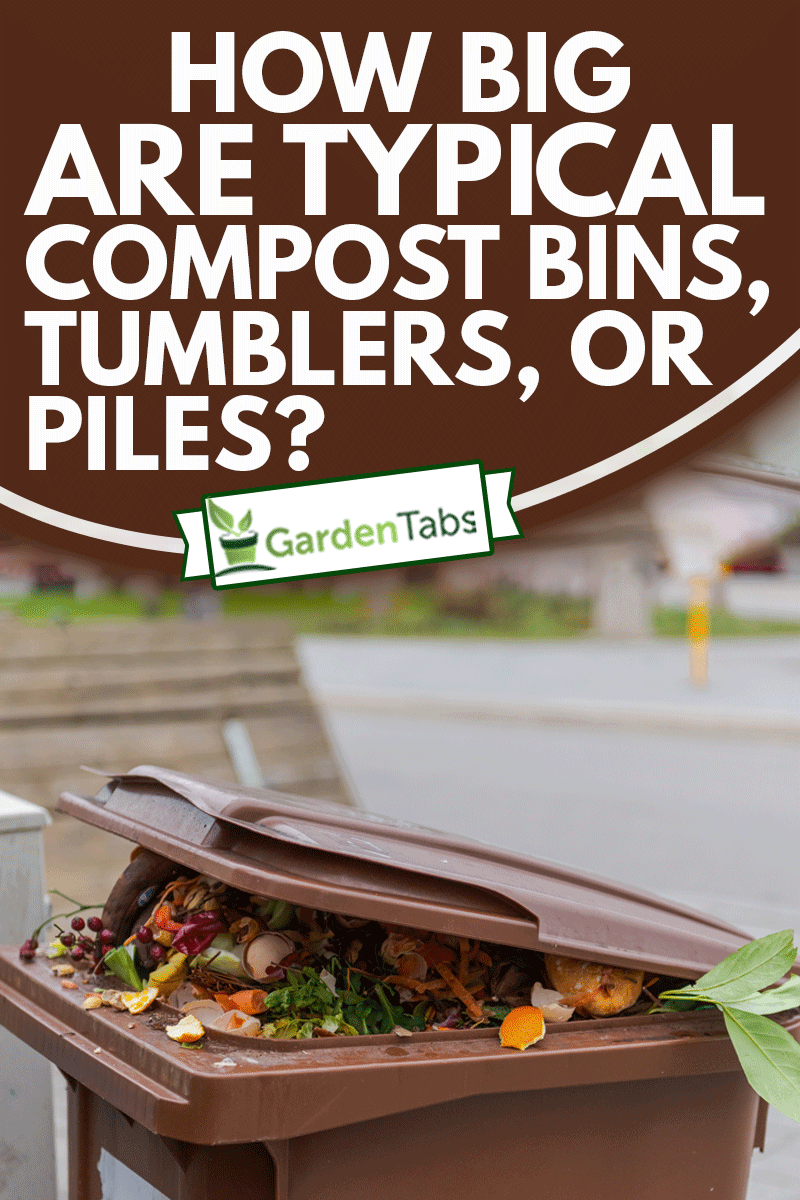
Compost Bin Sizes
There are many compost bins available. Bins typically have two measurements: the footprint and the capacity.
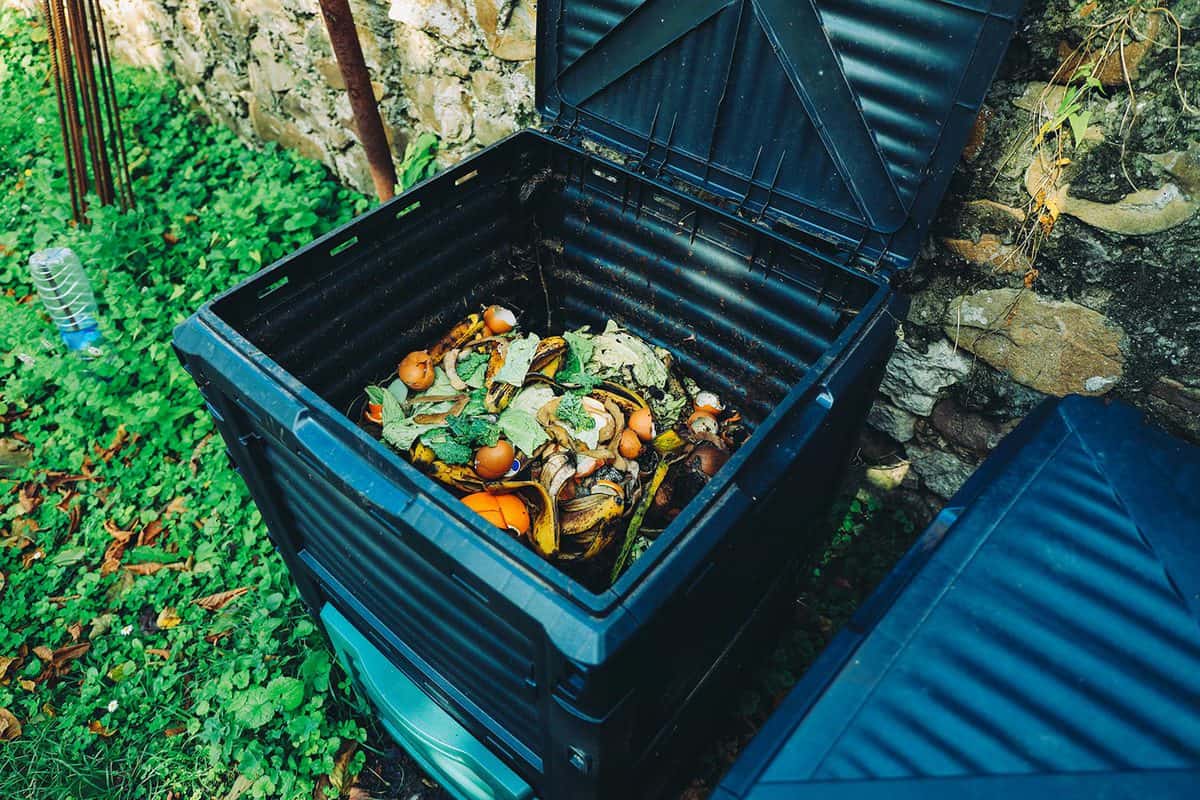
The footprint of a compost bin is how much ground space it takes up, and it is usually written in square feet.
The capacity of a compost bin is how much material it holds and is typically expressed in cubic feet or gallons. Whether you buy a bin in-stores, online, or plan to build your own, you want to make sure it's a good size.
Let's take a look at the typical dimensions of both tumbler and pile compost bins.
Tumbler Compost Bin Sizes
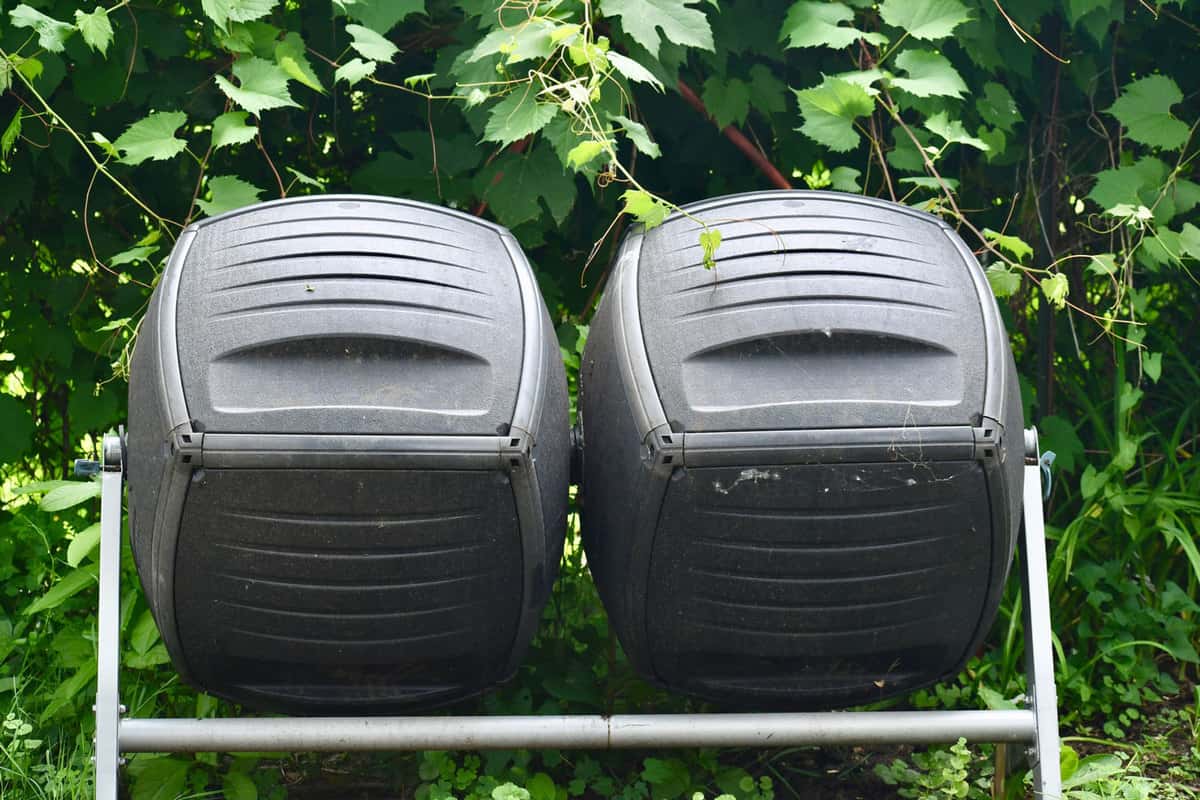
Tumbler compost bins are elevated, fully sealed containers made of metal or plastic. These containers are designed to be rotated using a handle.
On average, they take up about 5 to 6 square meters of ground space. They have a typical capacity of 4 to 15 cubic feet.
Of course, you can find bins outside of this range, but most people choose a tumbler that falls within these measurements.
As you look for a tumbler compost bin, you may notice that they are typically smaller than pile compost bins. The smaller design size is intentional, so rotating is easier.
If they held enormous amounts of organic matter, then it would be difficult for a person of average strength to spin the bin when necessary.
If you are interested in tumbler bins, read this article: Best Metal Compost Tumblers.
Pile Compost Bin Sizes
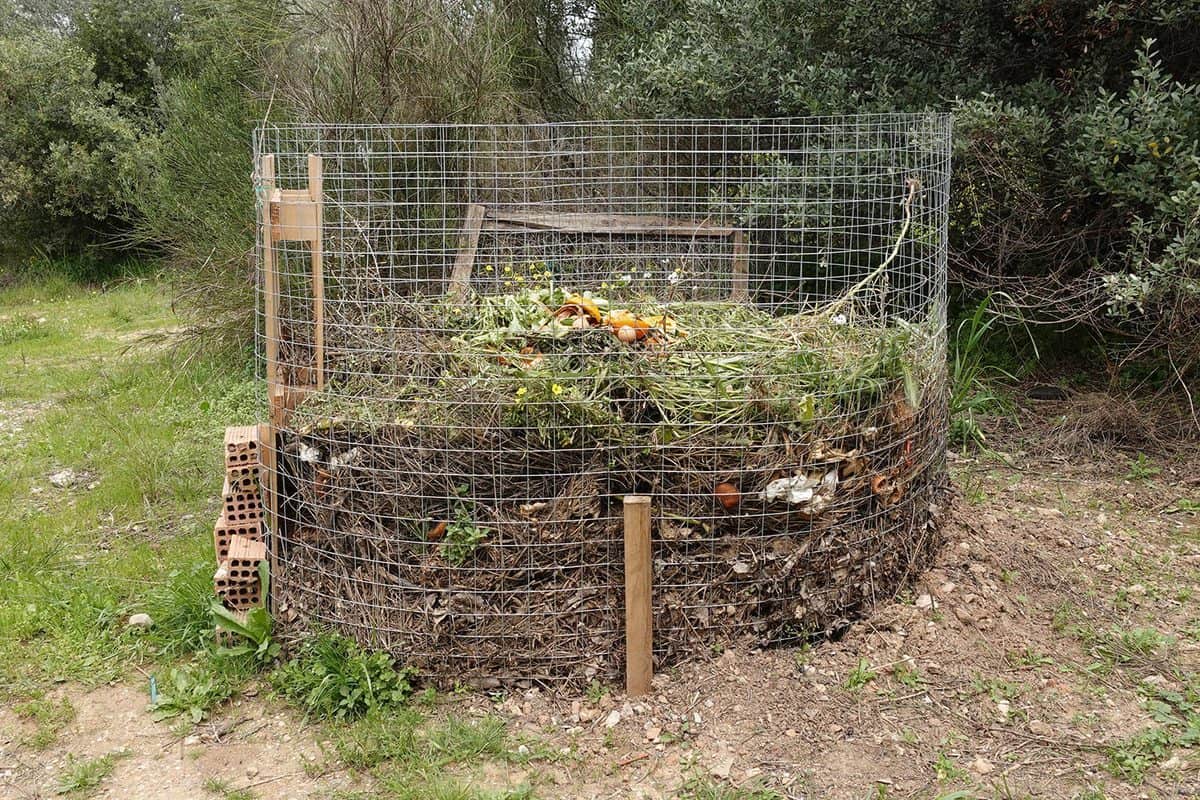
Pile compost bins are stationary containers usually made from wood, plastic, or metal. You layer the compost inside of these bins.
They are designed to hold large amounts of organic matter and are the most common compost bin choice for gardeners.
Their typical footprint size is the same as tumbler bins, 5 to 6 square feet. However, with a capacity of 7 to 20 cubic feet, they usually hold much more material than tumbler bins.
For people with lots of land, pile bins are the most popular choice. They are a simple way to contain the compost pile you may already have started on your property.
If you are deciding whether or not you need to get a bin, check out this article: Compost Pile Vs. Bin – Which Is Right For You?
General Composter Questions
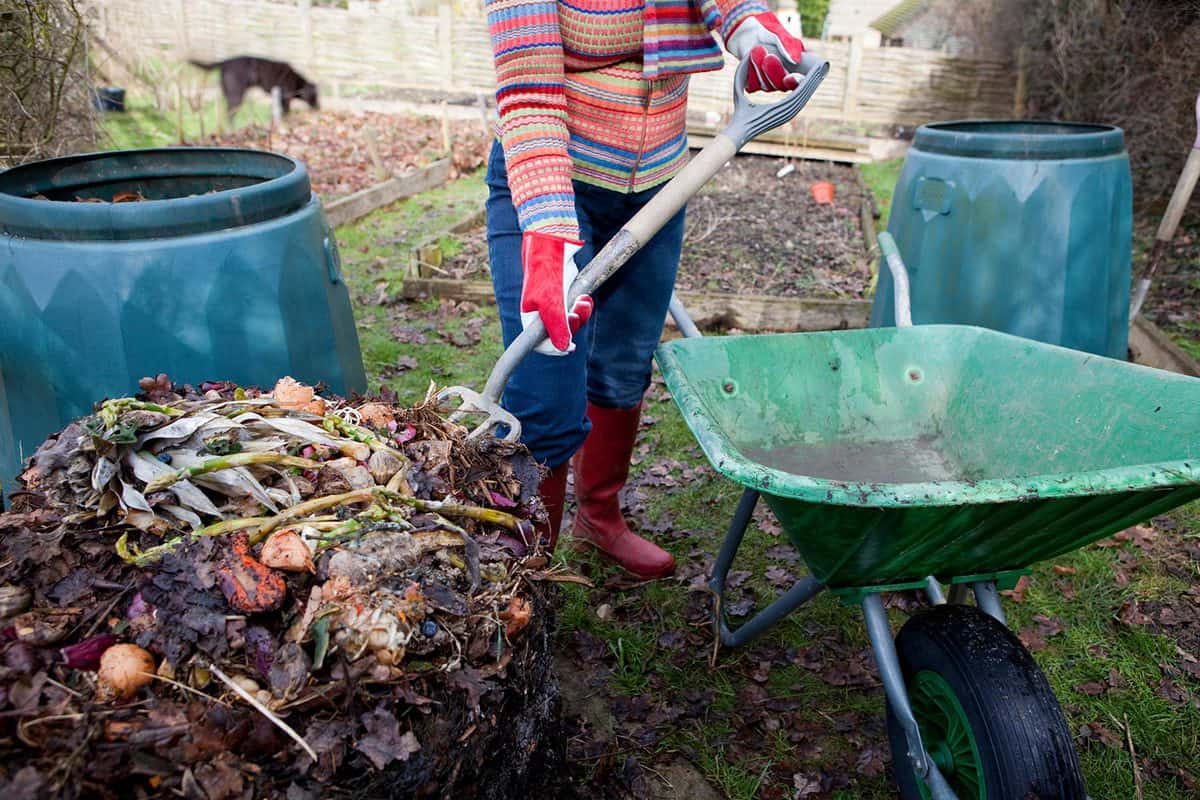
Now that you know about the different sizes of tumbler and pile compost bins let's talk about some general composter questions to help you on your composting journey.
How Large Of A Composter Do I Need?
Numerous factors influence how large of a composter you need. To determine the ideal size bin for your household, you need to consider:
- The number of people in your household
- The amount of organic waste your household produces
- Other organic scrapes you might add to the bin (garden clippings, grass, leaves, etc...)
- The size of your property
- The amount of land you plan to compost
- The climate you live in
- The type of soil you have
The more people there are in your home, the larger the composter you need. In addition, if you have a large property that produces a lot of yard waste, you should invest in a larger composter.
The warmer and more humid the climate you live in, the faster organic matter decomposes.
In climates like this, you may want a bigger composter to account for the rapid compost production. Buy a bin that holds 20 cubic feet or more. It is always better to have more space than too little.
If you don't have a yard, compost on your patio, live alone or don't eat much produce, you do not need a large compost bin. A composter with a capacity of 4 to 7 cubic feet is usually enough for situations like this.
Wondering what not to put in a home compost bin? Read this article to find out 20 Things Not To Put In Your Compost.
Is It Better To Have An Open Or Closed Compost Bin?
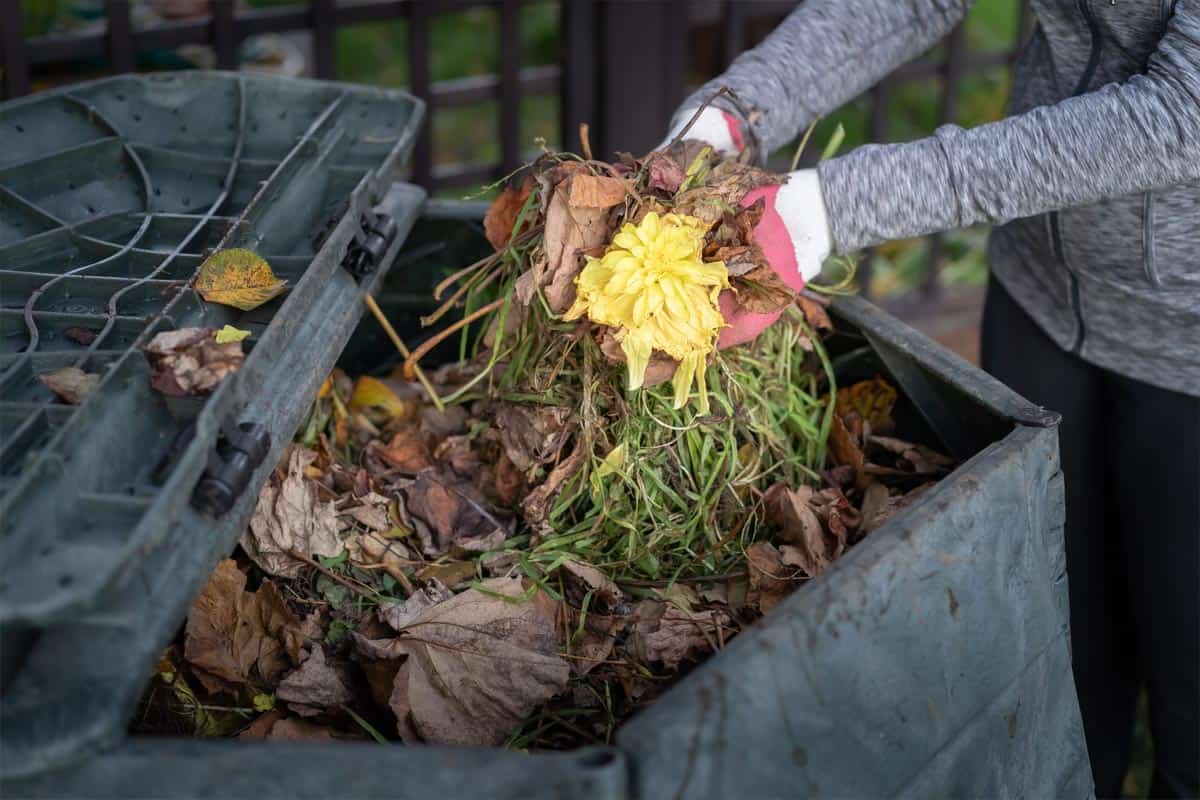
There are pros and cons to both open and closed compost bins. Open compost is recommended for people with lots of property. Usually, the more land you have, the more green waste you produce.
This can take up lots of space, so an open system is better at accommodating large volumes of organic materials.
In addition, you can place your pile far away from your house. The displeasing odors associated with composting won't waft into your home when the pile is out of sight.
Closed bin compost is better for people with less space. In addition, a closed-bin system keeps smells in, keeps pests out, retains heat, and ultimately produces usable compost faster.
This type of compost bin is more popular and easier to maintain no matter your living situation.
Where Should Compost Be, In The Sun Or Shade?
Compost bins can go in the sun or shade. The more sun your compost bin receives, the faster it produces nutrient-dense compost.
In cooler climates, a sunny spot is ideal for compost bins. However, more sun also means your compost dries out faster.
Make sure compost bins placed in full sun are kept moist to maintain optimal conditions for the breakdown of the organic matter inside.
The more shade a compost bin receives, the slower it produces compost. If you live in a warm, tropical climate, you may want to slow down your compost.
A shaded spot is sometimes the best choice for you, but it depends on how quickly you want your compost to be ready.
For more information on this topic, read this article: Where Is The Best Place To Put Your Compost?
General Tumbler Bin Composter Questions
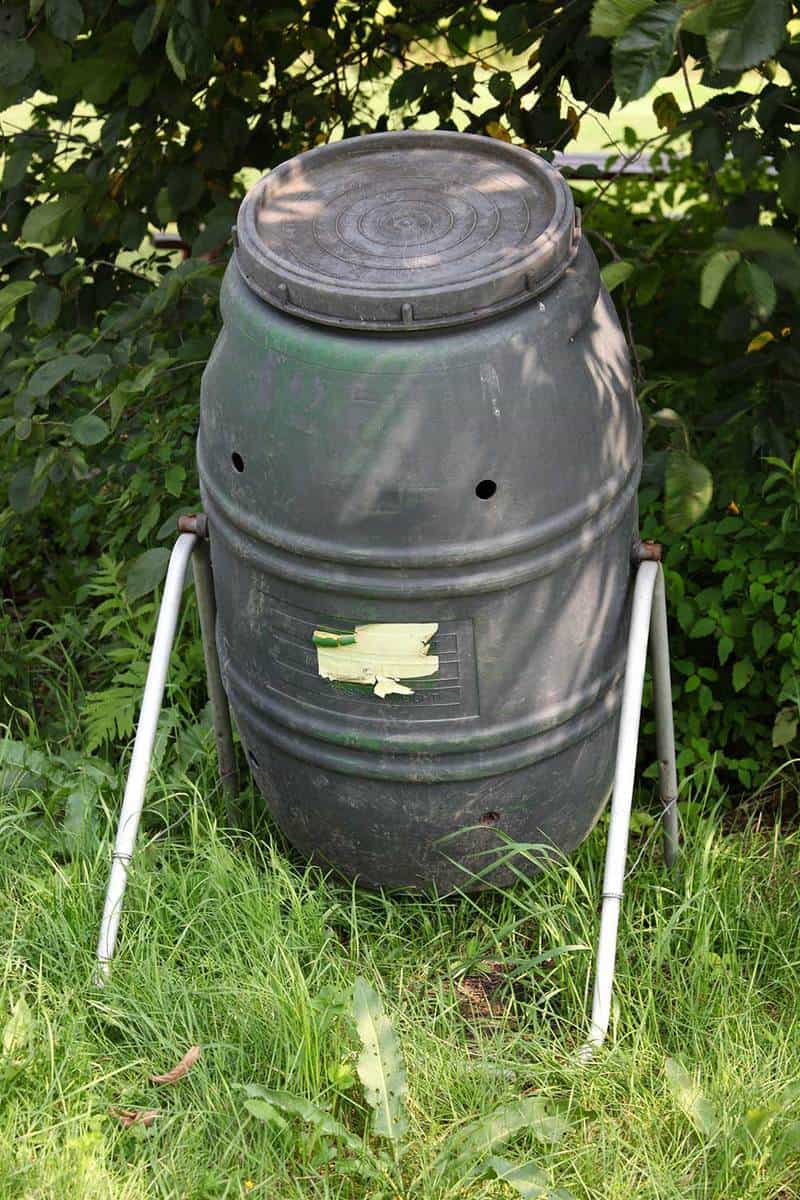
For those interested in learning more about tumbler composting, here are a few questions and answers you should look over.
What Should I Look For In A Compost Tumbler?
When searching for a compost tumbler, make sure to look at:
- The size/capacity
- The material
- The estimated composting time
- Dual vs. single bins
- Other special features
If you want to start tumbler composting, read this article: How To Start & Maintain A Compost Tumbler In 7 Easy Steps.
Is A Compost Tumbler Worth It?
For many, a compost tumbler is worth it. The special rotation mechanism of these bins produces usable compost at a faster rate than pile bins. The sealed container also keeps out pests and keeps unpleasant odors inside.
General Pile Bin Composter Questions

Here is some more information about pile bins to help you decide which type of composter is right for you.
How Deep Should My Compost Pile Be?
Many people agree that the ideal compost pile should be no more than 3 feet high. If your compost pile gets any deeper than this, it is hard to maintain and prevents the organic matter from breaking down evenly.
If you create a 3-foot deep pile of organic waste quickly, invest in more compost bins. Don't make your pile higher.
How Often Should You Turn Your Compost Pile?
How frequently you turn your compost pile depends on the climate you live in and the temperature of the pile.
As a general rule, a healthy, active compost heap benefits from turning every three days. Turning every day can inhibit beneficial fungi and bacteria from growing. In some areas, a pile may need to be turned sooner or later than every three days.
Check your pile every day to see if it is staying hot. Once you notice it cooling down, it is time to turn the pile.
Find The Perfect Compost Bin
Now that you know all about tumbler and pile compost bin sizes, you can find the correct container for your household. Composting is a fun and rewarding process anyone can start!
